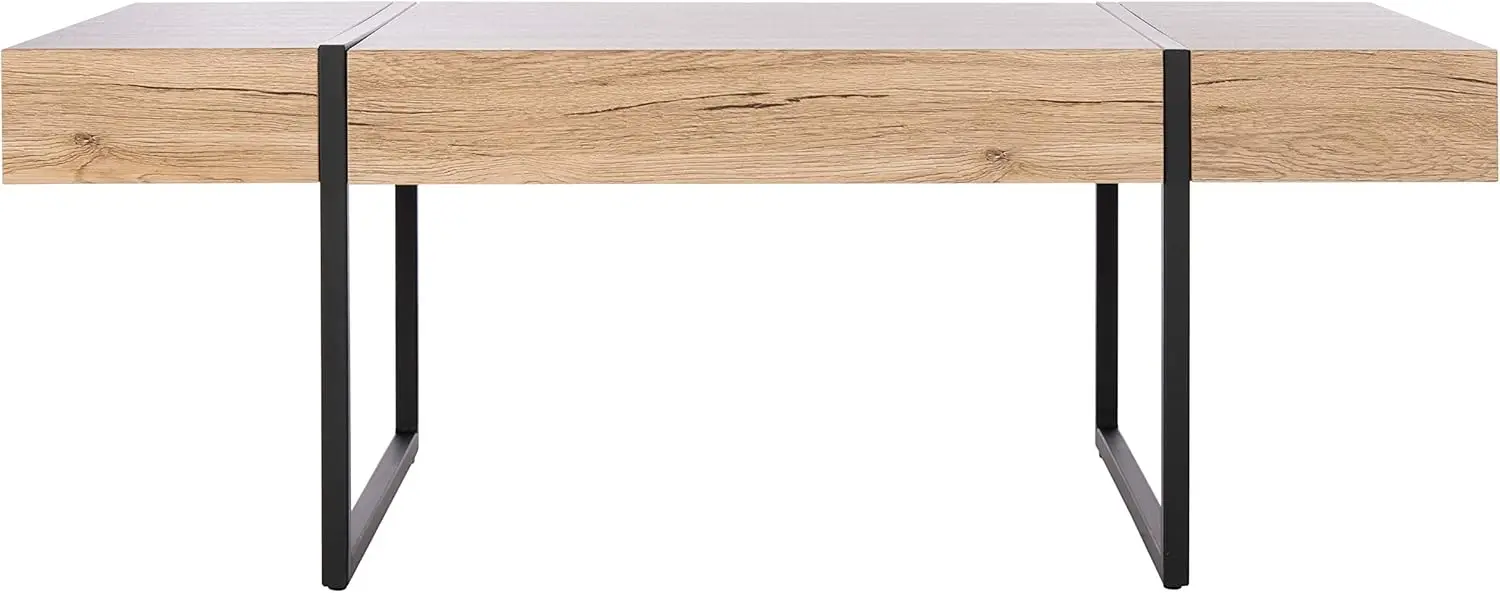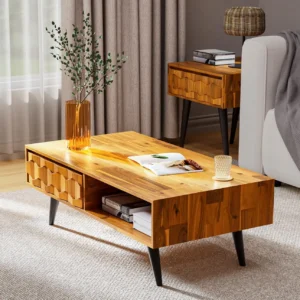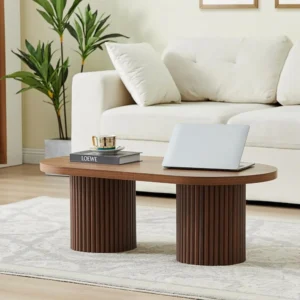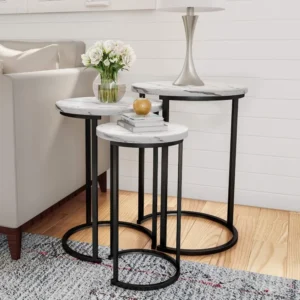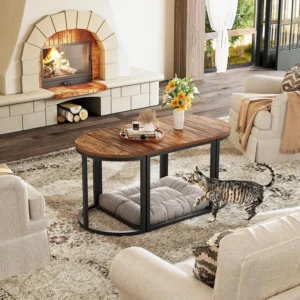Understanding Mid-Century Modern: The Foundation of Your Style Blend
Mid-Century Modern (MCM) design emerged primarily between the 1940s and 1970s, representing a shift toward simplicity, functionality, and integration with nature. This iconic style continues to captivate homeowners and designers alike because of its timeless appeal and versatility.
The core characteristics that define Mid-Century Modern include:
- Clean, sleek lines with minimal fuss or decoration
- Organic and geometric forms that follow function
- Open spaces and connection to the outdoors
- Focus on functionality without sacrificing beauty
- Minimal ornamentation with an emphasis on honest materials
Materials play a crucial role in authentic MCM design, with natural woods like teak, walnut, and oak taking center stage. These are often paired with materials that were innovative for their time—molded plywood, fiberglass, plastic, metal, and glass—all used to create practical yet beautiful forms.
Many iconic designers helped establish this style, creating pieces that are still coveted today. The Eames Lounge Chair, Saarinen’s Tulip Table, and Nelson’s Bubble Lamps represent the pinnacle of intelligent black mid-century coffee tables and other furnishings that define the era.
What makes MCM such an excellent foundation for style blending is its emphasis on clean lines and functional forms. These timeless qualities allow mid-century modern walnut coffee tables and other signature pieces to pair beautifully with various design aesthetics while maintaining harmony within your space.
The Art of Mixing Styles: Design Principles for a Cohesive Look
Successfully blending Mid-Century Modern with other styles requires understanding key design principles. Rather than creating a chaotic mix, thoughtful combinations can result in spaces with personality and visual interest.
Follow the 60-30-10 rule: Dedicate about 60% of your space to your primary style (Mid-Century Modern), 30% to a secondary complementary style, and 10% to accent pieces or a third style. This creates balance while allowing creativity.
Identify common elements: Look for shared characteristics between styles, such as similar color tones, materials, or geometric shapes. These connections create visual harmony.
Create strategic contrast: Purposeful contrasts—like pairing sleek MCM pieces with more textured items—can enhance both styles when done thoughtfully.
Establish focal points: Every room needs anchoring elements. A statement MCM piece can serve as the perfect focal point around which other styles can gather.
Mind scale and proportion: Ensure furniture pieces from different styles don’t clash in size or visual weight. Understanding the differences between mid-century vs mid-century modern furniture helps maintain appropriate scale in your space.
Build on a neutral foundation: Neutral walls, flooring, and larger furniture pieces provide a canvas for more distinctive style elements to shine without overwhelming the space.
Scandinavian Style: The Perfect Minimalist Companion
Scandinavian design naturally complements Mid-Century Modern because both styles share philosophical roots in simplicity, functionality, and appreciation of natural materials. This pairing creates spaces that feel both timeless and fresh.
Why It Works:
Scandinavian and MCM designs both emerged from the modernist movement, with Scandinavian style emphasizing light, brightness, and simplicity while MCM focuses on organic forms and innovative materials. Together, they create a balanced space that feels both warm and sleek.
How to Blend:
Create a harmonious color palette using light neutrals (whites, creams, light grays) from Scandinavian design with the warmer wood tones of MCM pieces. The contrast between lighter Scandinavian woods (like ash or birch) and darker MCM woods (like walnut) creates visual interest without clashing.
Add hygge elements—the Danish concept of coziness and comfort—to warm up MCM’s sometimes austere lines. Drape a chunky knit throw over an MCM sofa or place a sheepskin rug beside an Eames chair. Layer in simple textiles and natural elements that complement mid-century modern solid wood coffee tables while adding softness to the overall aesthetic.
Industrial Style: Raw Edges Meet Refined Design
The juxtaposition of industrial rawness with Mid-Century Modern refinement creates spaces with depth, character, and visual interest. This combination works particularly well in lofts, apartments, and homes with architectural features worth highlighting.
The Compelling Contrast:
Industrial style’s raw, unfinished quality creates a fascinating counterpoint to MCM’s polished perfection. Yet they share important common ground:
- Both celebrate honest materials and craftsmanship
- Both embrace functional design elements
- Both incorporate wood and metal, though in different ways
- Both have stood the test of time as enduring design aesthetics
Creating Harmony Between Raw and Refined:
* Pair exposed brick walls or concrete floors with sleek MCM furniture
* Use factory-style pendant lighting above an MCM dining table
* Place an MCM sideboard against a metal or pipe shelving unit
* Choose a color palette of neutrals, grays, and blacks with occasional pops of color
When styling black mid-century coffee tables, consider adding industrial elements like metal trays, mechanical objects repurposed as art, or raw metal candlesticks to create a balanced vignette that honors both styles.
Bohemian Style: Free-Spirited Warmth Meets Structured Lines
The bohemian aesthetic—with its layered textures, global influences, and artistic spirit—provides a wonderful counterbalance to Mid-Century Modern’s structured forms. This combination creates spaces that feel both designed and collected, personal and timeless.
Textile Integration
Layering textiles is key to successful MCM-Bohemian fusion. Place a vintage kilim or Moroccan rug under an MCM coffee table, drape colorful throws over structured MCM seating, or add embroidered pillows to an Eames chair. These soft elements warm up the clean lines of mid-century modern coffee tables while adding personality.
Color Harmony
Bohemian style brings rich, earthy tones and jewel colors that complement MCM’s wood tones beautifully. Consider rust, ochre, emerald green, or indigo blue as accent colors against walnut or teak MCM pieces. These warm colors bridge the two styles without overwhelming the clean MCM lines.
Natural and Handcrafted Elements
Incorporate plants generously—hanging plants, large floor specimens, or small potted varieties—to enhance both the bohemian and MCM connection to nature. Add handcrafted elements like macramé hangings, ceramic vessels, or global artifacts to bring bohemian personality to MCM’s more manufactured aesthetic.
Contemporary Style: Bridging Past and Present
Contemporary design—defined by what’s current right now—pairs effortlessly with Mid-Century Modern because today’s design still draws significant inspiration from MCM principles. This combination creates spaces that honor design history while feeling thoroughly up-to-date.
- Natural progression: Contemporary design evolved partly from MCM influences, making their combination historically coherent
- Shared simplicity: Both styles favor clean lines and uncluttered spaces
- Functional focus: Each prioritizes usability and purpose over unnecessary decoration
- Material harmony: Contemporary glass, metal, and high-tech materials complement MCM wood and organic forms
To successfully integrate contemporary elements with MCM foundations, consider:
* Pairing a glass or acrylic contemporary coffee table with MCM lounge chairs
* Adding contemporary lighting fixtures above MCM furniture groupings
* Displaying modern art on walls near MCM storage pieces
* Introducing contemporary textiles with subtle patterns that echo MCM geometric tendencies
Mid-century modern glass top coffee tables naturally bridge these styles, incorporating classic MCM lines with contemporary material preferences.
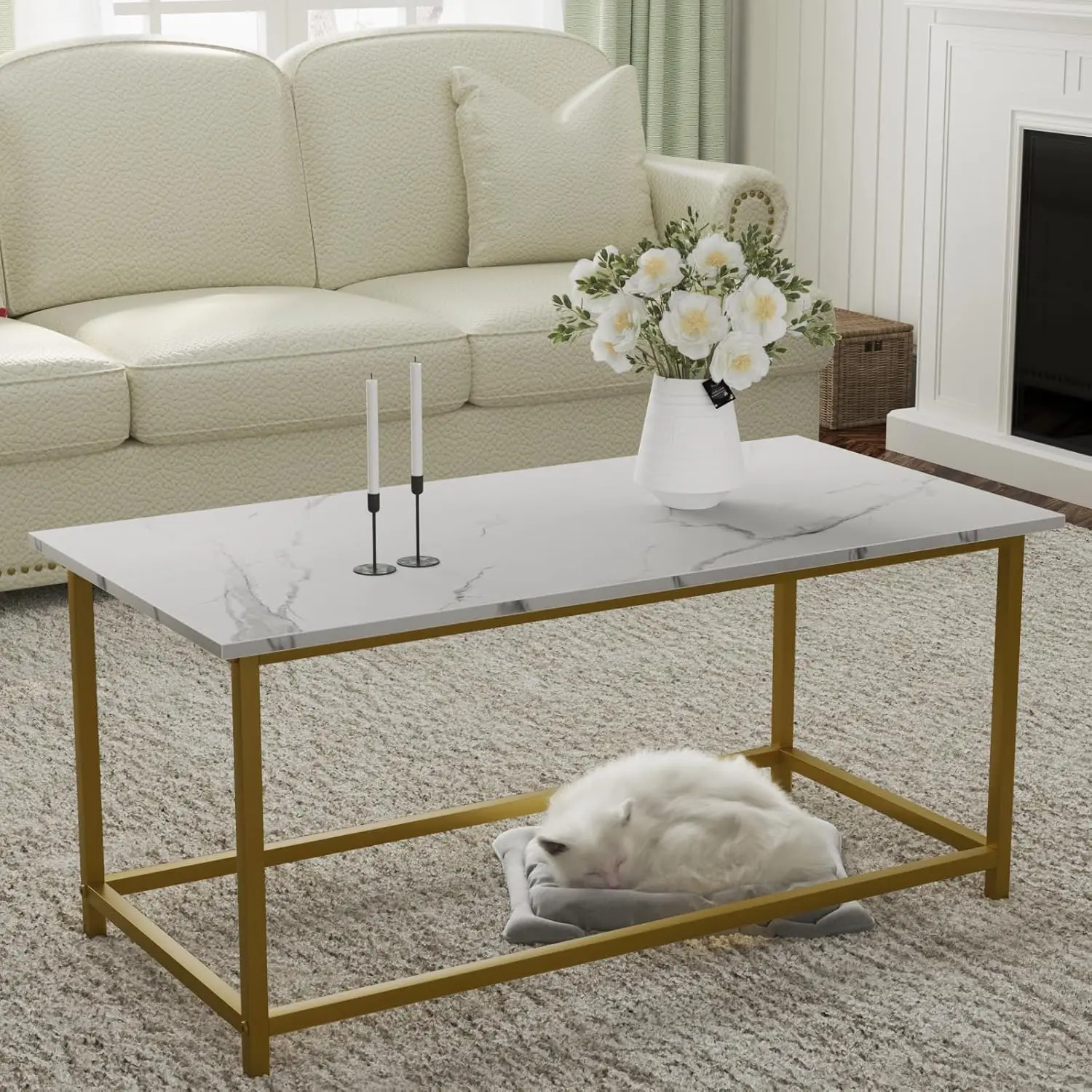
Rustic and Farmhouse Styles: Warmth Meets Mid-Century Cool
Though seemingly opposite at first glance, the rustic warmth of farmhouse style creates a compelling balance when combined with Mid-Century Modern’s clean simplicity. This pairing satisfies both the desire for homey comfort and design sophistication.
What unites these styles is their deep appreciation for natural materials, particularly wood. Where they differ—MCM’s refined finish versus farmhouse’s weathered appearance—actually creates appealing tension in a space.
Material Pairings:
The smooth, polished woods of MCM pieces contrast beautifully with the reclaimed, distressed wood common in farmhouse design. This juxtaposition highlights the unique qualities of both. Try an MCM sideboard against a shiplap wall or a sleek MCM dining table with more rustic farmhouse-style chairs.
Color Harmony:
Farmhouse style’s warm neutrals, creams, and weathered whites provide an airy backdrop for MCM’s deeper wood tones. Decorating black mid-century coffee tables becomes easier when placed against the lighter farmhouse palette, creating focal points through contrast.
Texture Balance:
The rough textures of farmhouse style—woven baskets, cotton textiles, galvanized metal—soften MCM’s smooth finishes. Layer these textural elements thoughtfully while maintaining the clean lines that make MCM special.
Art Deco: Glamour Meets Functional Design
Art Deco’s bold geometric patterns and luxurious materials create an unexpected but successful partnership with Mid-Century Modern’s simpler forms. Both styles emerged as reactions to previous design movements and share an appreciation for strong shapes and visual impact.
This combination works because:
* Both styles feature strong geometric forms and patterns
* Both celebrate innovation in materials and manufacturing
* Both balance form and function, though with different emphasis
* Both make confident design statements
Material Integration:
* Add mirrored or lacquered surfaces to complement MCM wood tones
* Incorporate brass or gold accents with MCM pieces for warmth and glamour
* Use black and white marble elements as sophisticated accents
Pattern and Color:
* Introduce geometric Art Deco patterns through rugs, pillows, or wall coverings
* Create a color palette featuring jewel tones (emerald, sapphire, ruby) with MCM’s wood hues
* Use black and white as graphic counterpoints to MCM’s organic forms
Mid-century modern round coffee tables with their geometric silhouettes provide perfect foundations for Art Deco accessories like sculptural vases or geometric bookends.
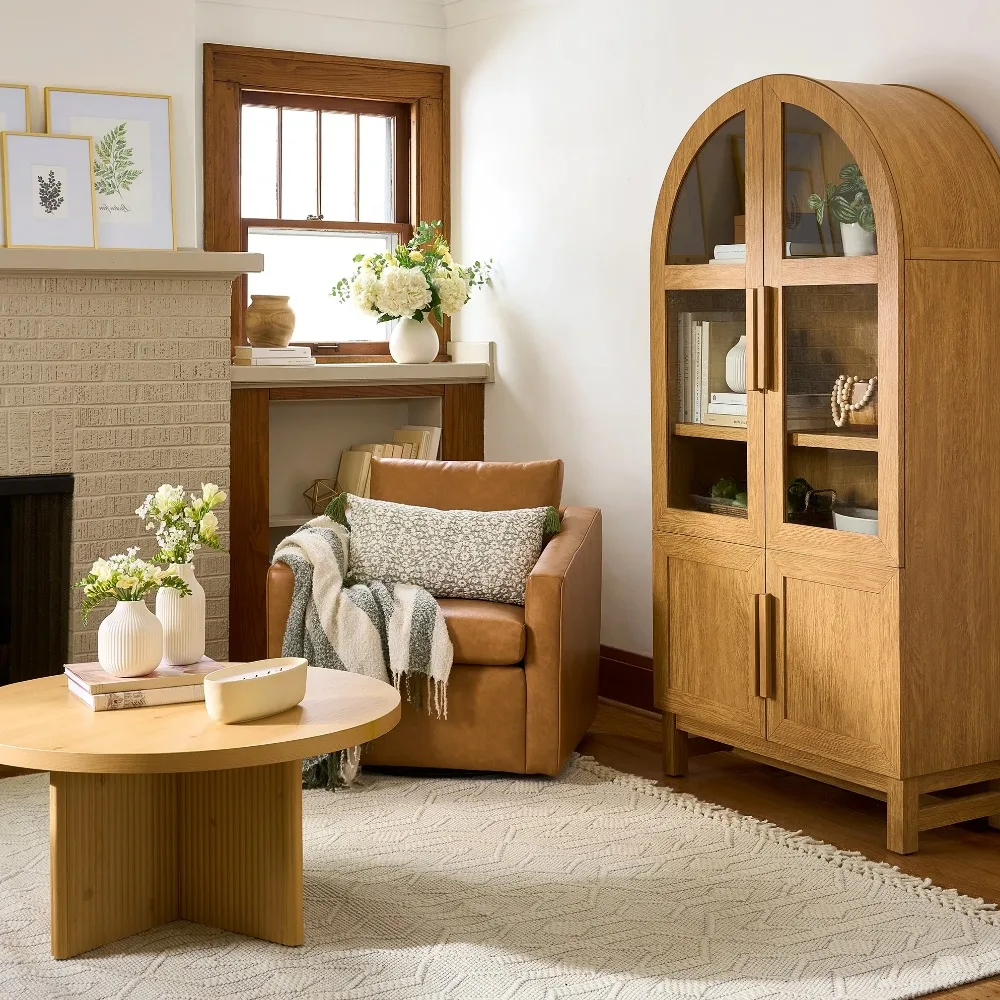
Global and Eclectic Style: Curated Collections Meet Clean Design
Mid-Century Modern’s simple, architectural quality makes it the perfect backdrop for globally-inspired pieces and personal collections. This combination allows for personal expression while maintaining design cohesion.
MCM’s clean lines and minimal forms provide a gallery-like foundation that lets unique global pieces shine. Without MCM’s restraint, eclectic collections might appear chaotic; without eclectic elements, MCM rooms might feel impersonal.
To successfully blend these styles:
- Use MCM furniture as architectural anchors in each room
- Display global textiles—like suzanis, kantha quilts, or ikat fabrics—as wall art or throws
- Arrange collected artifacts on MCM shelving units or cabinets
- Introduce handcrafted elements from various cultures as counterpoints to machine-made MCM pieces
- Maintain breathing space around collections to honor MCM’s appreciation for openness
The versatility of black mid-century modern coffee table styles makes them perfect platforms for displaying carefully curated global treasures without visual competition.
Essential Elements for Successful Style Blending
Regardless of which styles you choose to combine with Mid-Century Modern, certain principles ensure successful integration:
Color Cohesion
Develop a consistent color palette that works across different style pieces. This might mean choosing MCM pieces in wood tones that complement colors in your secondary style, or selecting accent colors that appear in both style elements. Limited color palettes help diverse pieces feel connected.
Material Harmony
Identify materials that can bridge different styles—brass hardware might connect MCM with Art Deco, while natural wood tones might link MCM with Scandinavian or rustic pieces. Black coffee tables in mid-century interiors often serve as versatile anchors that work with nearly any secondary style.
Thoughtful Furniture Selection
Select key anchor pieces (usually larger furniture items) from your primary style, then add secondary style pieces in a deliberate way. Ensure proportions remain harmonious—oversized farmhouse pieces might overwhelm delicate MCM designs if not carefully balanced.
Mid-Century Modern End Table Sets of 2, Mid-Century Modern Square Side & End Tables, Mid-Century Modern White Side & End Tables
$348.24 Select options This product has multiple variants. The options may be chosen on the product pageMid-Century Modern Solid Wood Coffee Tables, Mid-Century Modern Teak Coffee Tables
$879.95 Select options This product has multiple variants. The options may be chosen on the product pageMid-Century Modern Danish Coffee Tables, Mid-Century Modern Oval Coffee Tables, Mid-Century Modern Solid Wood Coffee Tables
$390.05 Select options This product has multiple variants. The options may be chosen on the product pageMid-Century Modern Nesting Side & End Tables, Mid-Century Modern Nesting Table Sets, Mid-Century Modern Round Side & End Tables
Price range: $239.35 through $273.06 Select options This product has multiple variants. The options may be chosen on the product pageMid-Century Modern End Table Sets of 2, Mid-Century Modern Walnut Side & End Tables
Price range: $978.89 through $1,957.38 Select options This product has multiple variants. The options may be chosen on the product pageMid-Century Modern Coffee & End Table Sets, Mid-Century Modern Coffee Table Sets, Mid-Century Modern Oval Coffee Tables
Price range: $257.48 through $331.04 Select options This product has multiple variants. The options may be chosen on the product page
Lighting as a Unifier
Thoughtful lighting choices can bridge different styles effectively. A contemporary pendant light might illuminate an MCM dining set, while an industrial floor lamp might stand beside an MCM lounge chair. Lighting creates mood while connecting disparate elements.
Art and Accessories
Select art and accessories that reference elements from both styles. Abstract art often works well with MCM furniture while also complementing more contemporary or eclectic designs. These smaller elements can serve as visual bridges between different style statements.
Personalizing Your Mid-Century Modern Mix
The most successful interiors transcend pure “showroom looks” by incorporating personal elements that tell your unique story. When mixing styles with Mid-Century Modern, prioritize choices that reflect your personality and lifestyle.
- Mix vintage and new pieces for depth and character—pair authentic vintage MCM finds with newer items in complementary styles
- Incorporate meaningful objects like family heirlooms, travel souvenirs, or personal collections alongside more “designed” MCM elements
- Consider your lifestyle needs rather than strictly adhering to design rules—a family with children might need more durable, relaxed elements mixed with their MCM pieces
- Customize your color palette based on personal preference rather than strictly following era-appropriate schemes
- Edit thoughtfully to prevent visual chaos—give important pieces room to breathe
Mid-century modern side and end tables offer perfect opportunities to introduce complementary style elements in smaller doses, allowing you to experiment with combinations before committing to larger pieces.

Remember that the best interiors evolve over time, telling the story of your life and interests. Mid-Century Modern’s enduring appeal makes it the perfect foundation for this journey, adapting to your changing style preferences while maintaining its timeless quality.
By understanding the principles of successful style blending and considering which aesthetics naturally complement MCM design, you can create spaces that honor classic mid-century principles while reflecting your personal style and contemporary life.

